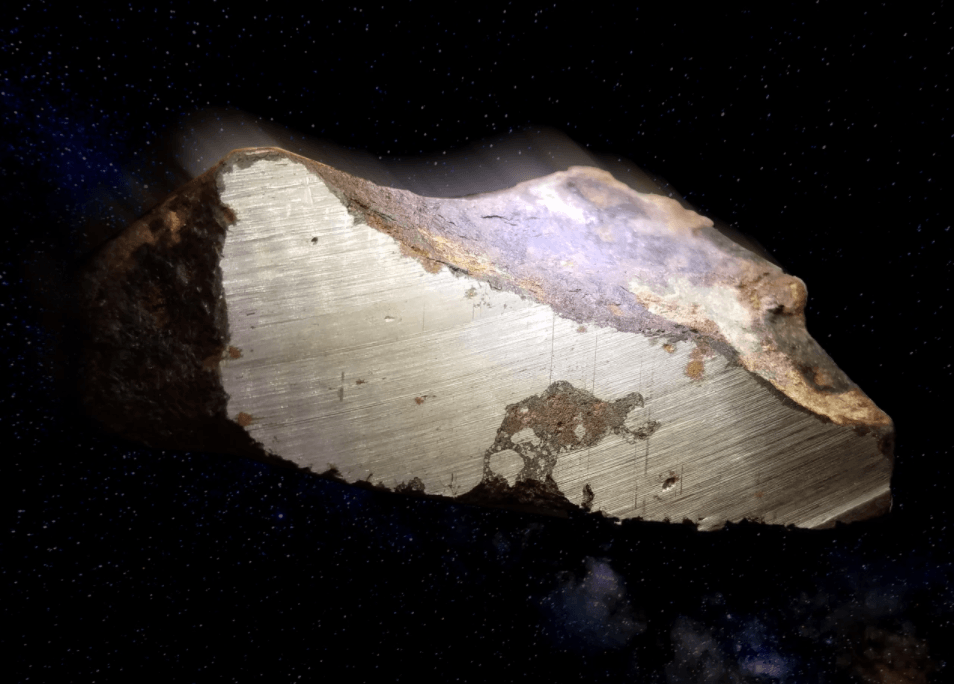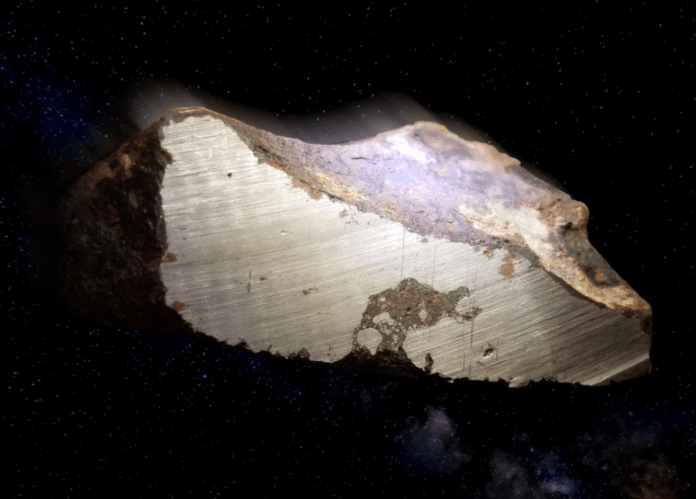
Photo credit: Carl Agee, Institute of Meteoritics, University of New Mexico. Background edited by MIT News.
Meteorites come from all shapes and places. Most of these are believed to be part of parent objects which were either melted or unmelted. These kinds of parent objects are called ’planetesimals’, the very early form of protoplanetary bodies. These were thought to be formed when pieces of matter collided and formed bigger objects in the early days of the universe 4.5 billion years ago.
Meteorites, in general, are mostly unmelted rocks or iron-based metallic rocks which were once molten. But there is a rare family of meteorites called the IIE Iron, that has baffled scientists since the 1960s. And a recent study on these 20 odd meteorites has concluded that two of these fallen IIE meteorites are from a parent body of both rocky shell and a metallic molten core. A multilayered planetesimal.
And they believe it must have generated a strong magnetic field once just like our earth does. This was proved with the Advanced Light Source (ALS) X-ray method which could confirm if the meteorite’s iron-nickel composite’s magnetic direction, if there were any. Sure enough, it proved that its parent body did have a magnetic field similar to the present-day earth’s, possibly up to several tens of microtesla. They also calculated that this metallic molten core must have been at least a few dozen kilometres wide.
Scientists believe that this kind of planetesimal must have been few millions of years old to be complexly formed in the early days. More importantly it must have collided badly to dislodge minerals from its molten core.
This discovery has been proving further evidence into multi-layered planetary structures. And these kinds of knowledge gives scientists an understanding of how these planetesimal structures formed very early on. Funded partly by the NASA this research was a joint effort from several international universities and MIT.

